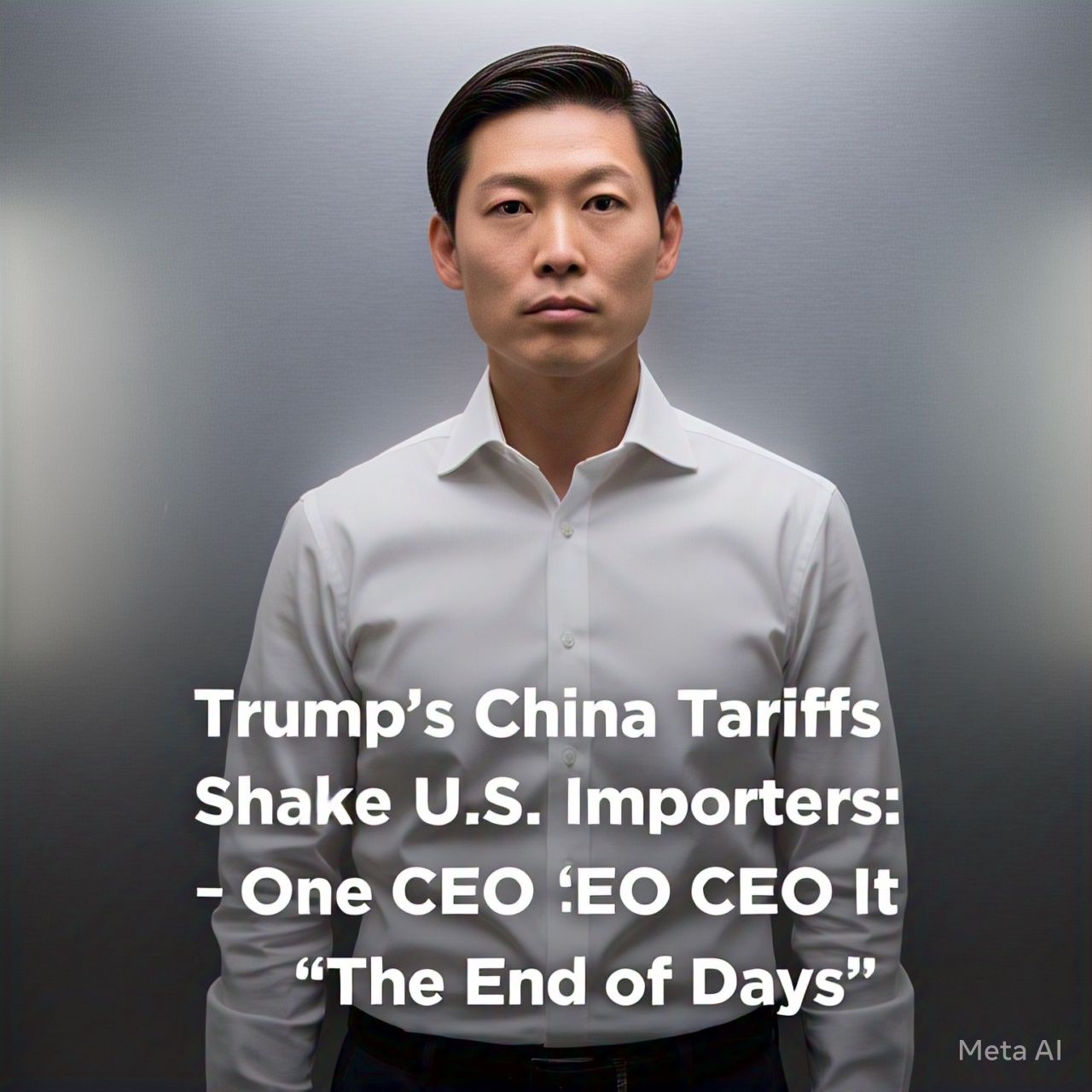WASHINGTON (AP) — Rick Woldenberg thought he had devised a solid strategy to shield his educational toy company in the Chicago area from President Donald Trump’s hefty new taxes on Chinese imports.
“When Trump announced a 20% tariff, I planned for a worst-case scenario of 40%, thinking I was being clever,” said Woldenberg, CEO of Learning Resources, a third-generation family-owned business that has worked with Chinese manufacturers for over 40 years. “I figured a slight price hike would allow us to survive a 40% tariff increase, which seemed outrageous at the time.”
But reality hit much harder than he anticipated.
Trump quickly escalated the tariffs, raising the levy to 54% to combat what he deemed China’s unfair trade practices. When China retaliated with tariffs of its own, the president raised the tariffs even further—to an astonishing 145%.
Woldenberg estimates that this tariff surge will increase Learning Resources’ tariff bill from $2.3 million last year to a staggering $100.2 million by 2025. “I wish I had $100 million,” he said. “Honestly, it feels like the end of days.”
America’s Dependence on Chinese Imports
For decades, U.S. consumers have relied heavily on low-cost Chinese imports, especially after China joined the World Trade Organization in 2001. This dependency has impacted a wide range of products, from smartphones to holiday decorations. In recent years, Mexico and Canada have surpassed China as the top sources of goods for the U.S., but China remains a dominant player, particularly in specialized categories.
China manufactures 97% of America’s imported baby carriages, 96% of artificial flowers and umbrellas, 95% of fireworks, 93% of children’s coloring books, and 90% of combs, according to a report by Macquarie investment bank.
As American companies have built supply chains around Chinese factories, low tariffs have smoothed the process. Back in January 2018, U.S. tariffs on China averaged just over 3%, according to Chad Bown from the Peterson Institute for International Economics.
“American consumers created China,” said Joe Jurken, founder of ABC Group in Milwaukee, which helps U.S. businesses manage Asian supply chains. “We got addicted to cheap pricing, and brands and retailers got hooked on the simplicity of sourcing from China.”
The Impact: Higher Costs, Slower Growth
Now, with Trump demanding that manufacturing return to the U.S., tariffs are hitting American importers and Chinese factories alike.
“The consequences of tariffs at this scale could be catastrophic,” said David French, senior vice president of government affairs at the National Retail Federation.
The Yale University Budget Lab estimates that the tariffs could slow U.S. economic growth by 1.1 percentage points in 2025, and the University of Michigan’s consumer sentiment survey shows Americans expect inflation to rise to 4.4%, up from 4.1% last month.
“Consumers are catching on,” said Stephen Roach, former chairman of Morgan Stanley Asia and now at Yale Law School’s China Center. “Inflation is already on the rise in the U.S.”
Uncertainty Is the Real Enemy
What’s frustrating for many businesses isn’t just the scale of the tariffs, but the speed and unpredictability with which they are being imposed.
On Wednesday, the White House announced that tariffs on China would soar to 125%. The following day, the White House revised that figure to 145%, which included a 20% tariff targeting China’s failure to stop fentanyl imports.
China, in turn, imposed its own 125% tariff on U.S. goods.
“There’s so much uncertainty,” said Isaac Larian, founder of MGA Entertainment, maker of popular toys like L.O.L. and Bratz dolls. “No business can thrive on that.”
MGA currently sources 65% of its products from Chinese factories and plans to reduce that share to 40% by the end of the year, diversifying into India, Vietnam, and Cambodia. However, Trump’s threat to impose tariffs on these countries too has complicated matters further.
Larian predicts that the price of Bratz dolls could spike from $15 to $40, and L.O.L. dolls might double to $20 during the holiday season. Even MGA’s Little Tikes brand, manufactured in Ohio, isn’t immune—parts sourced from China could drive up the price of toy cars from $65 to $90.
Larian is now considering reducing orders for the fourth quarter, fearing that higher prices will dampen consumer demand.
Reconsidering Production Plans
Marc Rosenberg, founder and CEO of The Edge Desk in Deerfield, Illinois, invested millions of his own dollars to develop ergonomic chairs, planning to begin production in China next month. Now, he’s pausing production and exploring markets like Germany and Italy to avoid U.S. tariffs.
He considered manufacturing the chairs in the U.S. but found that the cost would increase by 25% to 30%. “They don’t have the skilled labor, and frankly, they don’t have the desire to make these chairs,” Rosenberg said.
Manufacturing in China, ‘Kaput’ Overnight
For Woldenberg’s company, the impact is stark. Learning Resources, based in Vernon Hills, Illinois, has been in his family since 1916. Today, the company produces educational toys, including popular items like Botley the Coding Robot and Kanoodle, employing 500 people—90% of whom are based in the U.S.
“Overnight, about 60% of what I make in China is economically unviable,” he said. “With a snap of a finger, they’re kaput.”
Woldenberg calls Trump’s push for manufacturing to return to the U.S. a “joke.” Despite years of searching, he hasn’t found any American manufacturers capable of producing his company’s products at a competitive price.
The tariffs, he warns, could spell the end for thousands of Chinese suppliers, many of whom have invested in specialized tools and molds to meet U.S. manufacturers’ needs. Losing these suppliers, Woldenberg explains, would leave U.S. companies not only without their manufacturing base but also without the critical tools needed to produce their products.
Learning Resources has about 10,000 molds in China, collectively weighing more than 5 million pounds. “It’s not like you can just walk in with a canvas bag and walk out,” Woldenberg said. “These molds are essential to our business, and there’s no idle factory in America waiting to take them.”
In sum, the uncertainty and steep tariffs are reshaping the U.S.-China trade landscape in unpredictable ways. Businesses are struggling to adapt, with no clear end in sight. Whether it’s inflated toy prices or the collapse of decades-old supply chains, it’s clear that these tariffs are far from just a bump in the road—they are rewriting the rules of global commerce.



